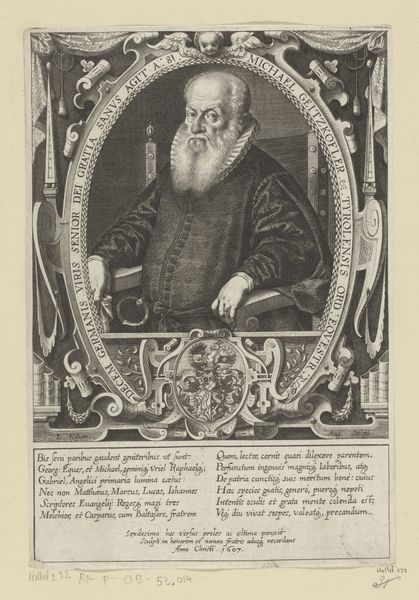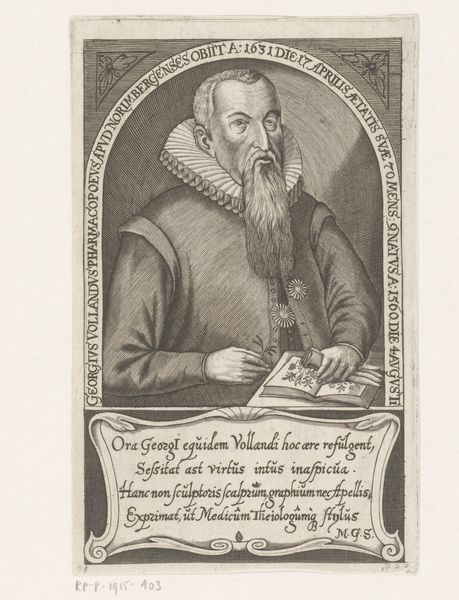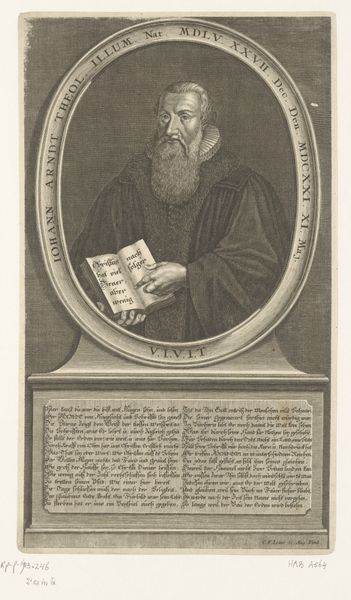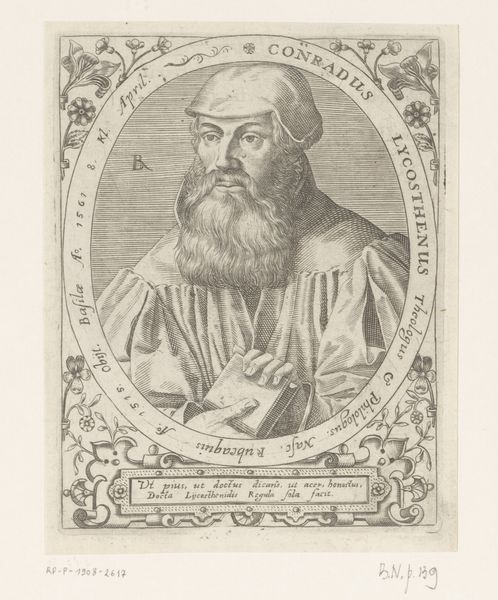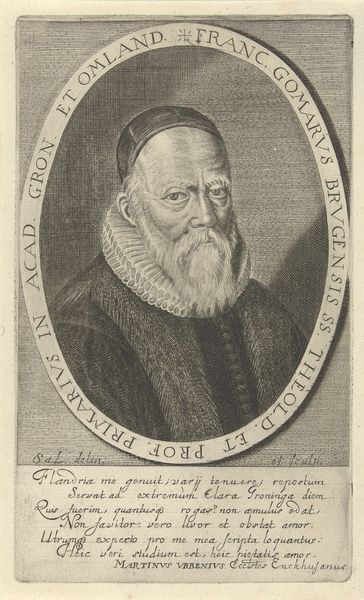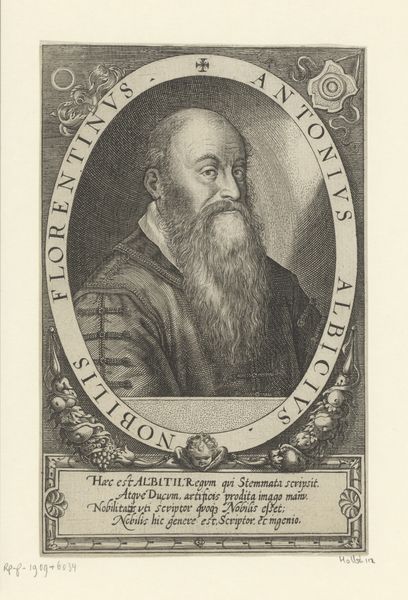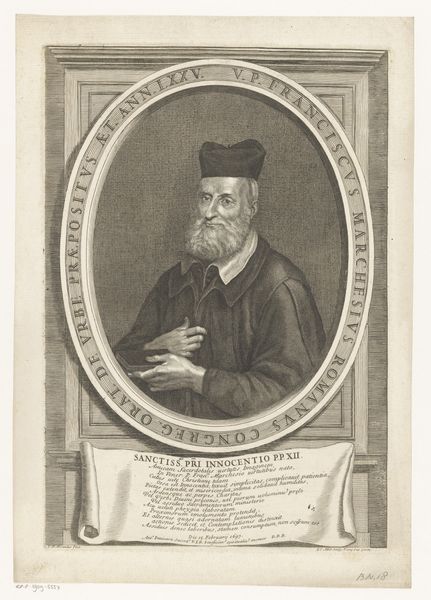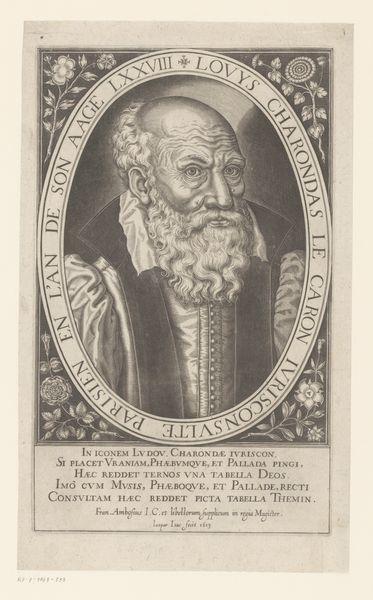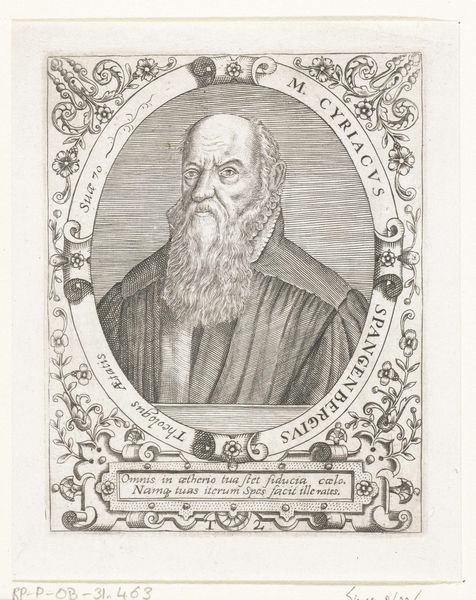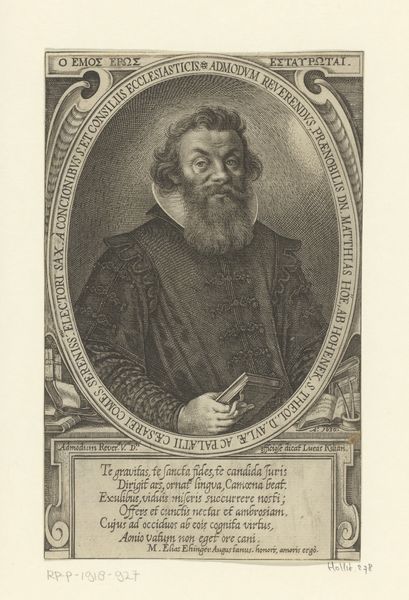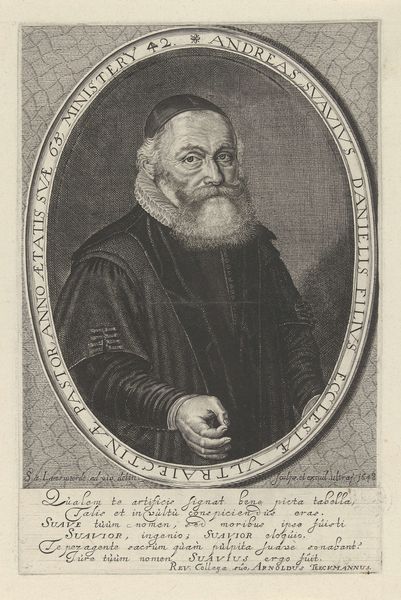
print, engraving
#
portrait
#
baroque
# print
#
engraving
Dimensions: height 176 mm, width 120 mm
Copyright: Rijks Museum: Open Domain
Curator: This is Johann Pfann’s portrait of Joseph Clauder, engraved sometime between 1648 and 1663. The level of detail achievable in printmaking is astounding. Editor: My first thought is how it makes me feel uneasy—the intense gaze, combined with the rigidity and flatness inherent in engravings. What does the act of replicating a person in this manner suggest? Curator: Let's consider the engraving process. Think of the labor—the highly skilled craftsmanship etched onto a metal plate and then transferred, repeatedly, to paper. This reproducibility challenges the notion of a unique, precious artwork. Instead, it democratizes the image. Editor: Interesting point. Clauder, a poet and theologian, is intentionally presented as a figure of authority, both through his vestments and his book. Yet, that democratization of the image you mentioned implies a wider audience engagement, perhaps even questioning or subverting such authority. Also, what about Pfann, who produced the print: who was commissioning it and why? What did Pfann know about Clauder and how might that have affected his decisions around what and how to engrave? Curator: Excellent questions. These portraits were often commissioned as markers of status or as memorial pieces. Printmaking, in its capacity to circulate images and ideas, would play an increasingly pivotal role in reformation-era religious discourse. The inscriptions themselves also show craft and labour as it takes an enormous amount of technical skill to create these complex letterforms at such a small size. Editor: Precisely. Look at the inscriptions framing Clauder. While ostensibly commemorating him, they also construct a particular narrative. His poetry, his piety. But whose narrative is being prioritized and potentially erasing the multifaceted aspects of his personhood? Was it written to promote the patron and their personal agendas? What biases might be baked into this image? Curator: So you are bringing up the material conditions of portraiture's creation but also emphasizing it as a social creation! Thinking about its material form opens up possibilities for asking what stories this portrait tells, and what they might obscure about its historical subject. Editor: Exactly. It invites us to engage actively, not just passively receive. And, the consideration of material conditions opens opportunities to view sitters and artwork in dialogue together, even across centuries!
Comments
No comments
Be the first to comment and join the conversation on the ultimate creative platform.
